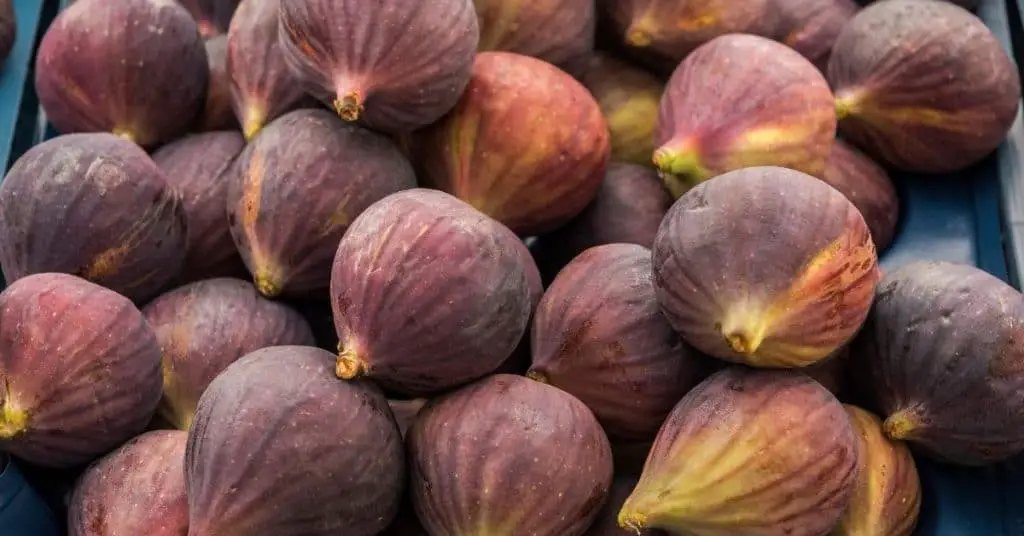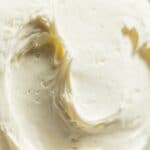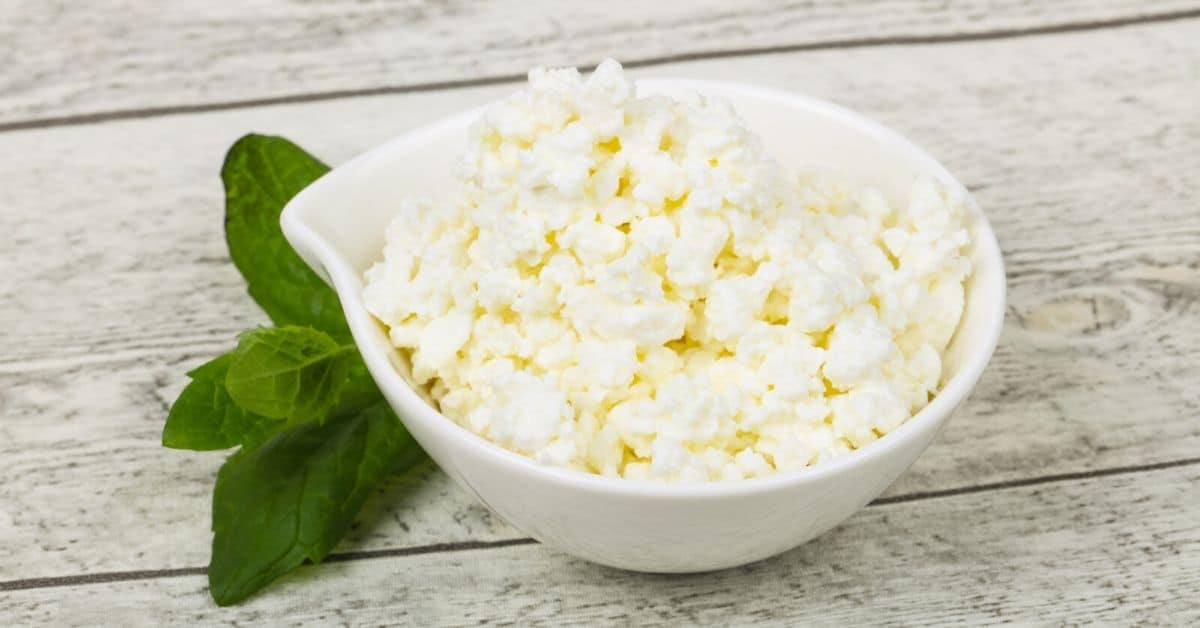In short, yes, you can freeze fresh figs to preserve their delicious taste, but they may become softer and mushier when thawed, so they are best used for cooking or baking.
Figs are delicious, chewy, and versatile to use in sweet and savory dishes. They can be used in salads, baked goods, on cheese platters, as a pizza topping, grilled, used as a pastry filling, cooked into jams, sauces, or just eaten as a fresh fruit snack.
Figs are available mostly in summertime, but that doesn’t mean you can’t enjoy them throughout the entire year. Figs can be frozen to extend their shelf life, so go ahead and buy a bulk box in season, and follow the guidelines below to store them safely in the deep freeze for up to 10 months.
Can Figs Be Frozen?
Yes, you can freeze fresh figs to preserve their delicious taste, although they may not retain a plump texture on thawing. When freezing figs, ice crystals form which damage the cell walls of the fruit. When the frozen figs are thawed, the firm texture turns softer and a little mushy.
All that means is that they won’t make an appetizing salad topping, but they are still perfectly great for sauces, fig jam, preserves, pie fillings, muffins, bread, cakes, and addition to ice cream.
In fact, using frozen figs instead of fresh figs in cooking will speed up the process as the fruit cell walls have already been broken down.
It is preferable to store figs separately from other fruits since they can cause other fruits to deteriorate faster. The better the quality of the figs before freezing, the better they will be once defrosted.
Always use fresh figs that are fully ripe. If they have already started going off, toss them and don’t even consider freezing.
How To Freeze Figs
Figs can be frozen with or without sugar, peeled or unpeeled. Coating them in sugar helps to preserve the flavor and color during the freezing process.
Step 1: Clean
Wash the ripe figs in cold water and remove any overripe fruits since they will not freeze well. Cut the stems and, if preferred, peel them.
Step 2: Prepare
Cut the figs in halves or quarters as you prefer and choose one of the following methods to prepare them for storing in the freezer.
Method 1: Flash Freeze
Figs will turn a darker color during freezing due to contact with air. To prevent this, lightly coat the figs in a mix of powdered ascorbic acid dissolved in a little water (¾ tsp ascorbic acid per 4 cups of fruit). You could also just squeeze a little lemon juice over them instead.
Spread the cut figs on a lined baking sheet in a single layer so that they do not touch each other. Place the baking sheet in the freezer just until the figs are completely frozen. Remove the sheet from the freezer and pack the frozen fig pieces into zip lock freezer bags.
It is very important to remove any excess air from the bag before sealing.
Method 2: Sugar Coat
Once you have cut the figs, portion the pieces into the amount you would want to defrost at a time. Sprinkle granulated sugar over the fruit and toss to coat well. Place each portion into a resealable bag and let sit for 15 minutes. Press out any air before sealing the bag tightly.
Method 3: Sugar Syrup
Another way to preserve the fig flavor and color is by submerging the fruit in a simple syrup. The result after thawing will be somewhat similar to canned fruit.
To make a sugar syrup, combine 2 cups of water with 1 cup of granulated sugar. Heat in a saucepan and stir until the sugar has completely dissolved. Once dissolved, the mixture will be clear or slightly white, remove it from the heat and let it cool.
Allow 1 cup syrup for each quart (4 cups) of figs. To keep fruit from changing color, stir ¾ teaspoon of ascorbic acid into each quart (4 cups) of syrup.
Portion the figs into airtight freezer-friendly containers. Pour the cooled syrup over the fruit until just covered. Leave an inch headspace at the top of the container. Place a piece of crumpled wax paper against the surface of the fruit to keep it submerged and protected from the air before closing.
Step 3: Label and Freeze
Label the freezer bags or containers with the date to keep track of how long it has been frozen and place in the freezer straight away.
How To Thaw Frozen Figs
To defrost figs, remove the container or bag from the freezer and place it in the fridge. It is best to put the container or freezer bag onto a plate or in a bowl to catch any water running off during thawing. Leave the frozen fruit overnight to defrost. If frozen in a sugar syrup, stir the mixture occasionally and drain off the syrup before using.
If you are using the figs in a smoothie, you can add them directly from the freezer without thawing.
Types of Figs
Although there are a large variety of figs grown worldwide, the below 5 types are the most common, generally found at grocers and supermarkets.
#1. Adriatic Figs
Adriatic figs are pale green to pale yellow in color, the outer skin forms pale green-and-white striped patterns. With bright pink or reddish fleshy insides, these figs are super sweet and therefore ideal for desserts.
#2. Black Mission Figs
Another very sweet fig is the Black Mission fig. They have a dark purple exterior with bright pink fleshy interiors.
#3. Brown Turkey Figs
Brown Turkey figs look very similar to Black Mission figs as they have a brown and purple exterior. They do, however, have a light pink flesh with a mild and less sweet flavor. This makes them great for salads, or desserts that already contain a lot of sweetness.
#4. Calimyrna Figs
Calimyrna figs are large with a green and slightly golden outer skin. Their beautiful pink interiors make them great for use as a garnish, on fruit platters, or cheese platters. These figs have a unique nutty flavor.
#5. Kadota Figs
Kadota figs have light green skin with pale flesh. Not quite as sweet as other figs, they are a good option for salad, pizza topping, and are ideal to cook into fig jam and preserves.
FAQs
Conclusion
Fresh or cooked, figs are such a versatile fruit and make any meal seem a little more decadent. Roast them, bake them, blend them, preserve them, whatever you do, the juicy, sticky bundles of chewy delight are just too good to be wasted.
Since they don’t have a very long shelf life, it is a great idea to pop them in the freezer so that you can enjoy the summer harvest all year long. Although freezing affects figs you can preserve them for future use. If you store frozen figs properly they will maintain a great flavor for delicious, decadent, and healthy recipes.
The little extra time spent to preserve them sufficiently will be so worth it a few months down the line!
Up Next: How to Freeze Pears
Photo by depositphotos.com/resulmuslu









